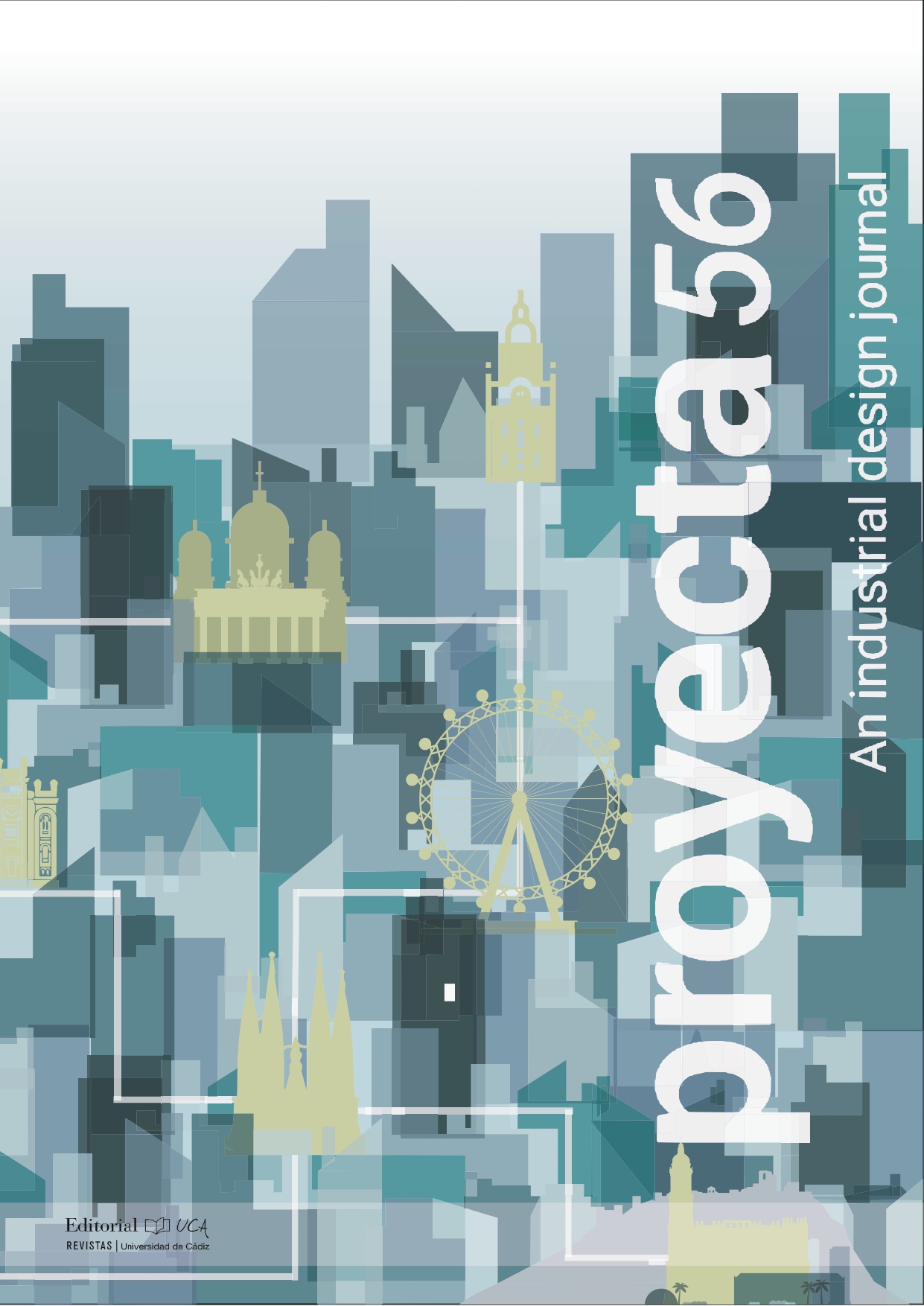New methods and tools applied for the transfer of knowledge of nanomaterials: A design challenge for Grupo Antolin's company
Abstract
In any product design process, the designer must take into account both the materials and technologies with which he/she must work. Currently, materials and technologies are becoming one of the main elements to foster innovation and add value to final products. Among the many materials, nanomaterials are of particular interest. Nanotechnology is set to play a key role worldwide in the 21st century, as it is a cross-sectoral technology, increasingly relevant to economic fields such as chemistry, medical technology, automotive or food industry. But, if the designer does not know how to work with it and wants to know the scope of this new material, how to transfer this knowledge, related to nanomaterials, from theory to practice? The industry demands experts (designers) who can bridge the gap between theoretical knowledge and practical applications of nanomaterials: products, services and experiences. This article presents a method of knowledge transmission, in which two main tasks can be distinguished: 1) a primary educational component, in which knowledge about new materials and their properties is disseminated in an optimal didactic way, and 2) a second more practical component in which the information is converted into practical ideas and specific applications applied to a challenge proposed in collaboration with the Antolin group.
Keywords
Downloads
How to Cite
License
This Journal is under a Creative Commons License Attribution-NonCommercial-NoDerivs 4.0 International.
References
Amall Ramanathan, (2019). Toxicity of nanoparticles_ challenges and opportunities. Applied Microscopy, 49(1), 1-11.
Charles C. Bonwell, James A. Eison, (1991). Active learning: Creating excitement in the classroom. Washington, DC: School of Education and Human Development, George Washington University.
David Kolb, (1984). Experiential learning: Experience as the Source of learning and development. Englewood Cliffs: Prentice Hall.
Elvin Karana, Owain Pedgley, Valentina Rognoli (Eds.). (2013). Materials Experience: fundamentals of materials and design. Butterworth-Heinemann ISBN 978-0080993591
Elvin Karana, Paul Hekkert, Prabhu Kandachar, (2010). A tool for meaning driven materials selection. Materials and Design, 31(6), 2932-2941. https://doi.org/10.1016/j.matdes.2009.12.021
Haug, A. (2018). Acquiring materials knowledge in design education. International Journal of Technology and Design Education, (February), 1-16.
Ilse Van Kesteren, (2010) A User-centred Materials Selection Approach for Product Designers, Middle East Technical University Journal of the Faculty of Architecture 27(2) DOI:10.4305/METU.JFA.2010.2.18
Michael Ashby & Hugh Shercliff & David Cebon. (2007). Materials Engineering, Science, Processing and Design. ISBN 978-0081023761
Owain Pedgley, (2010). Invigorating industrial design materials and manufacturing education. METU. Journal of the Faculty of Architecture, 27(2), 339-360.
Paz Morer-Camo, Aitor Cazón-Martín, Maria Isabel Fernández-Ferradas, M. I., & Thomson, R. (2020). Chapter 2. Nanomaterials. Emerging Materials & Technologies. ISBN 9788835104513
Piselli, A., Baxter, W., Simonato, M., Del Curto, B., & Aurisicchio, M. (2018b). Development and evaluation of a methodology to integrate technical and sensorial properties in materials selection. Materials & Design, 153, 259-272.
Piselli, A., Dastoli, C., Santi, R., & Del Curto, B. (2018a). Design tools in materials teaching: bridging the gap between theoretical knowledge and professional practice. In DS 93: Proceedings of the 20th International Conference on Engineering and Product Design Education (E&PDE 2018), Dyson School of Engineering, Imperial College, London. 6th-7th September 2018 (pp. 193-198).
Valentina Rognoli, (2004). iI materiali per il design: un atlante espressivo-sensoriale [Materials for design: an expressive-sensorial atlas]. PhD Thesis. Politecnico di Milano.
Valentina Rognoli, (2011). A Broad Survey on Expressive-sensorial Characterization of Materials for Design Education. METU Journal of Faculty of Architecture, 27(2), 287–300. https://doi.org/10.4305/metu.jfa.2010.2.16
Zhou, Ziyu & Rognoli, Valentina. (2019). Material Education in Design: from Literature Review to rethinking. Insider Knowledge, DRS Learn X Design Conference 2019, 9-12 July, Ankara, Turkey. doi.org/10.21606/learnxdesign.2019.17078
Zuo, H. (2010). The selection of materials to match human sensory adaptation and aesthetic expectation in industrial design. METU Journal of the Faculty of Architecture, 27(2), 301–319.








